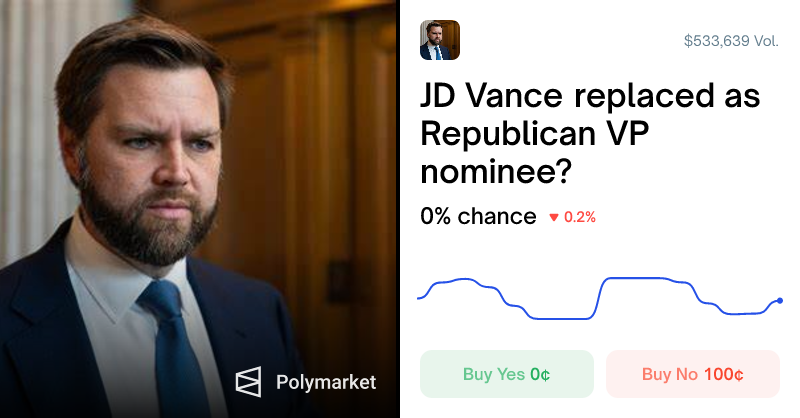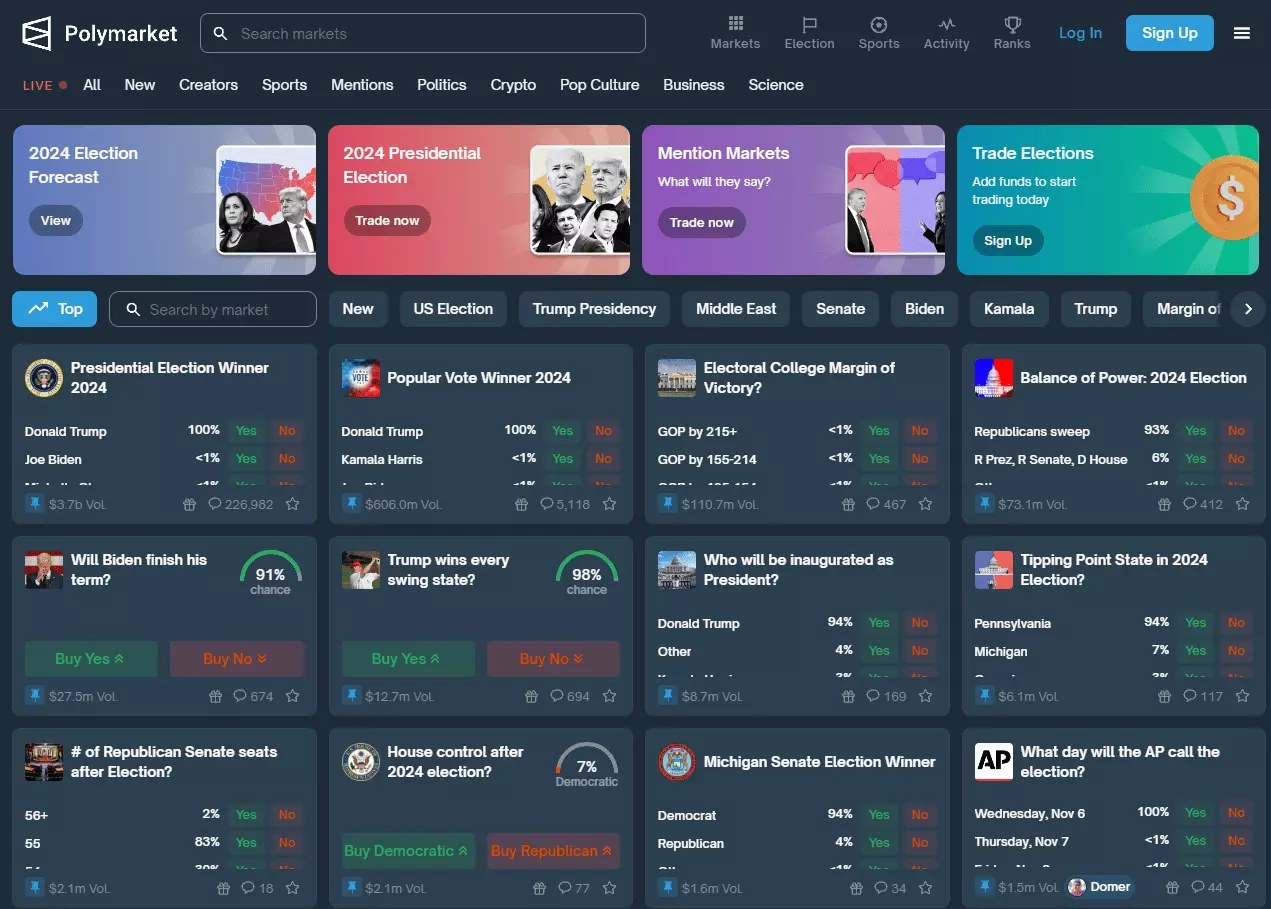The latest gambling data shows that U.S. Vice President JD Vance, with a 28% winning rate, has become the most bet-on favorite for the 2028 presidential election, leading potential Democratic competitors such as California Governor Gavin Newsom (15%), Representative Alexandria Ocasio-Cortez (9%), and former Transportation Secretary Pete Buttigieg (8%).
As the primary election layout gradually unfolds, Vance generally leads slightly in simulated matchups against Democratic frontrunners, but competition within both parties still has many variables.

According to gambling platform data, JD Vance is considered one of the leading candidates for the 2028 presidential election, likely to have a fierce competition with Democratic heavyweights Newsom or AOC. Although the 2028 election is still years away, candidates have already begun to take action, including advancing into key swing states like South Carolina to seek primary voter support or to raise campaign funds early.
Polymarket and other betting markets accurately predicted Trump's defeat of Harris in 2024, and the opening odds for the 2028 presidential election in July show that investors have bet nearly $4 million on candidates. Currently, JD Vance leads with a 28% winning rate, followed closely by the top three Democrats: Newsom at 15%, Ocasio-Cortez at 9%, and Buttigieg at 8%. Additionally, Republican Senator Marco Rubio ranks fifth with a 7% support rate, and Democratic Kentucky Governor Andy Beshear receives 5%.
After Vice President Harris announced she would no longer run for Governor of California, her prospects for the 2028 presidential race became unclear. Her betting odds once rose from 2.3% to 3.7%, then fell back to 3.3%, close to the rates of Michigan Governor Whitmer, Pennsylvania Governor Shapiro, and ineligible candidates like Trump (due to constitutional restrictions) and Elon Musk (not born in the U.S.). On the William Hill platform, her odds also fluctuated slightly from 2% to 3.8%.
Another betting market, Kalshi, has published the 2028 primary odds for both parties. For the Democrats, Newsom leads with a 20% support rate, followed by AOC at 15%, and Buttigieg at 10%. Maryland Governor Wes Moore follows closely at 6%. Harris, Shapiro, Beshear, and Jon Ossoff are all at 5%. Within the Republican party, JD Vance is more favored, with a winning rate of 54%, Rubio at 9%, Trump at 6%. Glenn Youngkin and Tulsi Gabbard both have a 5% winning rate.
In terms of polls, although Harris's chances are slim, if she ultimately runs, she could still be a strong competitor within the Democratic party. A McLaughlin poll in early July showed Harris with a 25% support rate, Newsom and AOC each at 9%, and Buttigieg at 8%. The latest AtlasIntel poll shows Buttigieg leading with 27%, followed closely by AOC at 19%, Newsom at 16%, and Harris at only 14%.
Within the Republican party, JD Vance leads in support rates. McLaughlin poll shows 31%, Trump at 19%, DeSantis at 8%, Rubio at 4%. AtlasIntel shows Vance with a high support rate of 58%, DeSantis at 13%, Rubio at 10%, and Trump Jr. at 5%. An Emerson College survey in July shows Vance leading the main Democratic candidates by 1-3 percentage points among early voters, with a margin of error of ±2.5%.
William Hill spokesperson Lee Phillips pointed out that after Harris gave up running for Governor of California, the possibility of her turning to the presidential election increased. Anti-Trump Republican organizations on social media stated that Newsom leads in Polymarket predictions with a 21% support rate, AOC at 16%, while moderate governors like Beshear and Shapiro are favored by centrist voters.
Trump Jr. tweeted on July 22, joking that his odds were as low as Harris's, and expressed doubts about whether a constitutional amendment would allow him a third run.
Presidential candidates usually announce their candidacy after the midterm elections in 2026, but candidates have already been actively positioning themselves, laying a solid foundation for the 2028 election in the coming years.










